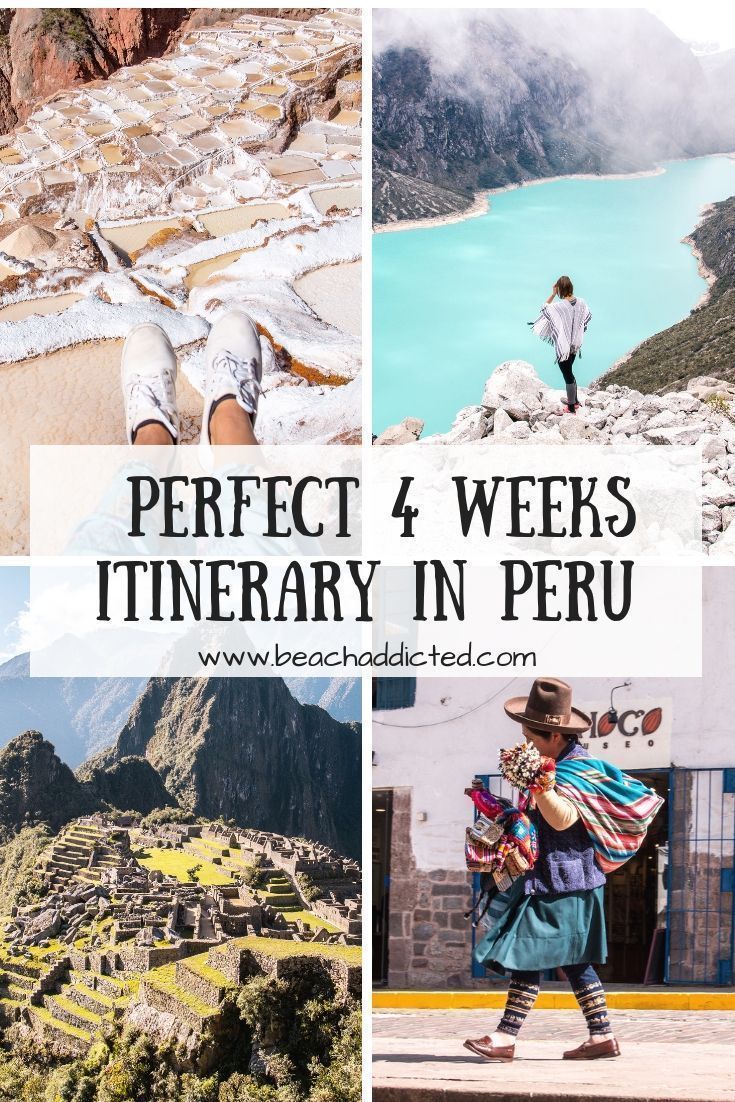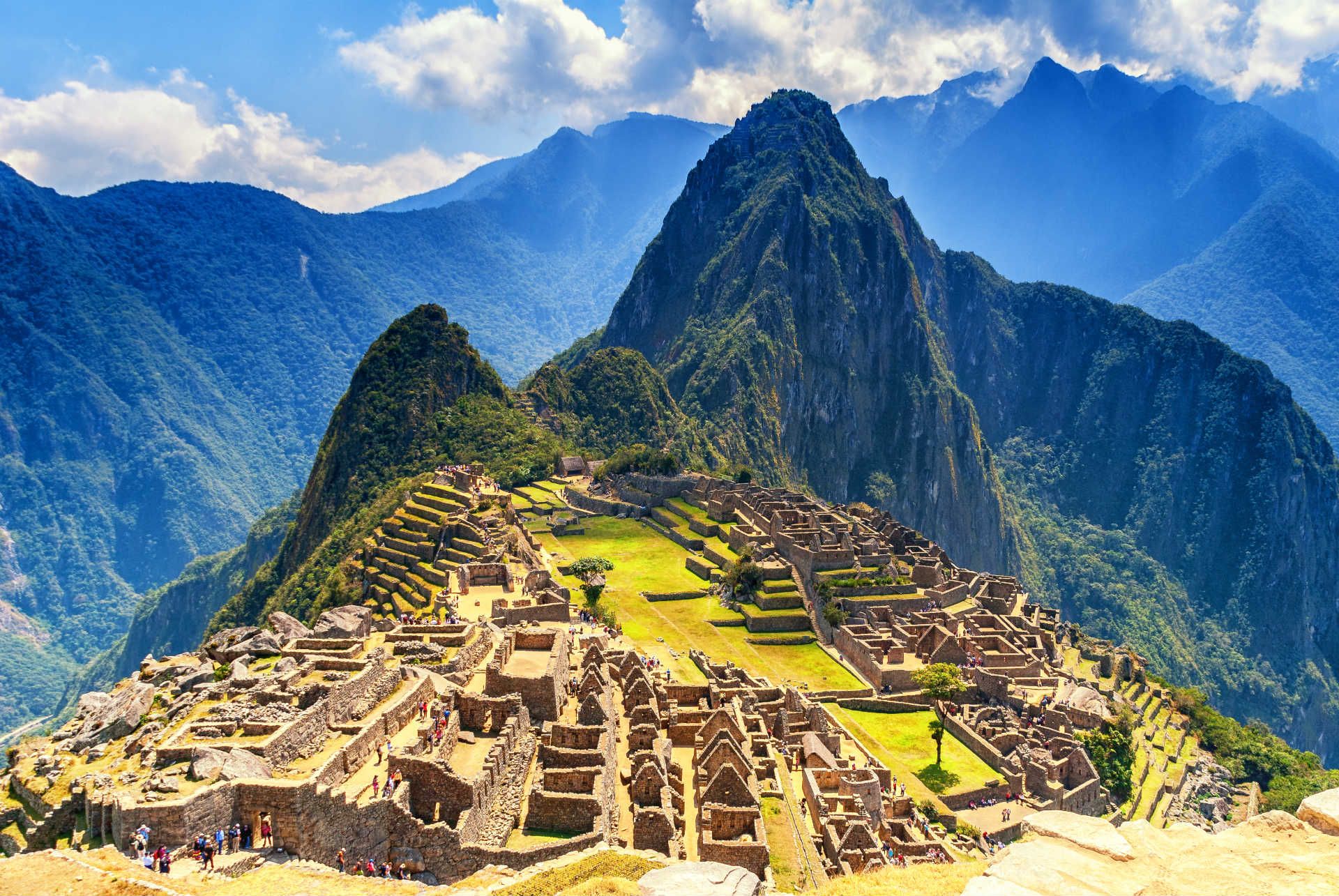
Peru, a land where ancient empires whisper through mist-shrouded ruins and vibrant cultures pulse in bustling marketplaces, beckons travelers with an irresistible allure. From the awe-inspiring peaks of the Andes to the enigmatic depths of the Amazon, this South American gem offers an odyssey for every kind of explorer. Whether you’re a history buff yearning to walk in the footsteps of the Incas, an adventurer seeking adrenaline-pumping experiences, or a foodie eager to savor a world-renowned cuisine, Peru promises an unforgettable journey. This comprehensive guide will equip you with everything you need to plan your Peruvian adventure, from its iconic attractions and rich history to practical tips on navigating its diverse landscapes.
A Tapestry of Time: Unraveling Peru’s Rich History
Peru’s history is a captivating narrative woven from the threads of ancient civilizations, colonial conquests, and modern resilience. The Inca Empire, the largest empire in pre-Columbian America, stands as its most prominent legacy. From the 13th to the 16th century, the Incas built an astonishing network of roads, sophisticated agricultural systems, and monumental architectural marvels, with Machu Picchu being their undisputed masterpiece. This mountaintop citadel, a UNESCO World Heritage site, continues to mesmerize visitors with its intricate stonework and breathtaking setting.

Related Articles about The Emerald Embrace: A Comprehensive Guide to Unveiling the Wonders of Peru:
- Slovenia: A Jewel Box of Natural Wonders and Cultural Treasures
- Bali: Island of the Gods and Your Unforgettable Escape
- Jakarta: A Metropolis of Contrasts – Exploring Indonesia’s Vibrant Capital
- Slovenia: A Jewel of Europe – Unveiling its Top Attractions and Essential Travel Guide
- A Traveler’s Handbook to Singapore: A Jewel of Southeast Asia
Before the Incas, other sophisticated cultures flourished, including the Moche, known for their elaborate pottery and metalwork, and the Nazca, famous for their enigmatic geoglyphs etched into the desert floor. The arrival of the Spanish conquistadors in the 16th century marked a dramatic turning point, ushering in an era of colonial rule and the establishment of cities like Cusco and Lima, which still bear the architectural imprint of this period. The struggle for independence in the early 19th century led to the formation of modern Peru, a nation that has since embraced its multifaceted heritage with pride.
The Crown Jewels: Peru’s Unmissable Attractions
Peru’s allure lies in its sheer diversity of landscapes and historical treasures. Here are some of its most captivating attractions:
-
Machu Picchu: The undisputed icon of Peru, this 15th-century Inca citadel is a testament to human ingenuity and architectural brilliance. Perched high in the Andes, its stunning setting and mysterious aura have captivated imaginations for centuries. Visiting at sunrise or sunset offers an almost spiritual experience.
-
Cusco: The former capital of the Inca Empire, Cusco is a UNESCO World Heritage city that beautifully blends Inca foundations with Spanish colonial architecture. Wander through its cobblestone streets, explore the Plaza de Armas, visit the Qorikancha (Temple of the Sun), and marvel at the imposing Sacsayhuamán fortress overlooking the city.

-
The Sacred Valley: Nestled between Cusco and Machu Picchu, the Sacred Valley is a fertile region dotted with Inca ruins, vibrant indigenous villages, and breathtaking scenery. Highlights include the agricultural terraces of Pisac, the salt pans of Maras, and the circular Inca ruins of Moray.
-
Lima: Peru’s vibrant capital city is a fascinating juxtaposition of colonial grandeur and modern dynamism. Explore the historic center, a UNESCO World Heritage site, with its ornate cathedrals and colonial mansions. Indulge in Lima’s world-renowned culinary scene, discover its burgeoning art scene, and soak in the Pacific Ocean views from the upscale Miraflores district.
-
Lake Titicaca: The world’s highest navigable lake, Titicaca is a mystical body of water shared by Peru and Bolivia. Discover the unique Uros floating islands, constructed entirely from reeds, and visit the traditional communities of Taquile and Amantani islands, where you can experience local life and purchase intricate textiles.
-
Arequipa and the Colca Canyon: Known as the "White City" for its stunning colonial architecture constructed from white sillar volcanic stone, Arequipa is a charming city at the foot of three volcanoes. From Arequipa, embark on an adventure to the Colca Canyon, one of the deepest canyons in the world, where you can witness majestic Andean condors soaring on thermal currents.
-
The Amazon Rainforest: Peru boasts a significant portion of the Amazon, offering unparalleled biodiversity and opportunities for jungle adventures. Explore the Tambopata National Reserve or the Manu National Park, venturing deep into the rainforest for wildlife spotting, boat trips along winding rivers, and experiencing the vibrant ecosystem firsthand.
-
Nazca Lines: These enormous geoglyphs, etched into the desert floor by the ancient Nazca culture, depict animals, geometric shapes, and human figures. The best way to appreciate their scale and artistry is by taking a scenic flight over the desert.
Planning Your Peruvian Expedition: Essential Travel Tips
Embarking on a journey to Peru requires a bit of foresight to ensure a smooth and enjoyable experience. Here are some essential travel tips:
-
Altitude Sickness (Soroche): Many of Peru’s most popular destinations, particularly Cusco and Machu Picchu, are at high altitudes. Take it easy on your first day, stay hydrated, avoid alcohol and heavy meals, and consider drinking coca tea, a traditional remedy. Consult your doctor about altitude sickness medication if you are concerned.
-
Currency: The official currency is the Peruvian Nuevo Sol (PEN). US dollars are widely accepted in tourist areas, but it’s advisable to carry some local currency for smaller purchases. ATMs are readily available in cities.
-
Language: Spanish is the official language. While English is spoken in major tourist hubs and hotels, learning a few basic Spanish phrases will greatly enhance your interactions with locals.
-
Safety: Peru is generally safe for tourists, but like any destination, it’s wise to be aware of your surroundings. Take precautions against petty theft, especially in crowded areas. Avoid displaying expensive jewelry and keep your valuables secure.
-
Visas: Most nationalities do not require a visa for stays up to 90 days. However, it’s always best to check the latest visa requirements for your specific nationality with the Peruvian embassy or consulate in your country.
-
Health: Consult your doctor about necessary vaccinations and precautions for your trip. Mosquito repellent is essential for Amazonian regions. Drink bottled or purified water.
-
Respect Local Customs: Peru is a country with rich cultural traditions. Dress modestly when visiting religious sites, ask permission before taking photos of people, and be mindful of local customs and etiquette.
A Home Away From Home: Accommodation Options
Peru offers a diverse range of accommodation to suit every budget and travel style:
-
Luxury Hotels: From world-class international chains to boutique hotels with exceptional service and amenities, you’ll find opulent options in cities like Lima, Cusco, and along the coast. These often offer stunning views, fine dining, and spa services.
-
Mid-Range Hotels: Comfortable and well-equipped hotels are abundant throughout Peru. They typically offer private rooms, en-suite bathrooms, and essential amenities for a pleasant stay.
-
Hostels: A popular choice for budget travelers and backpackers, hostels provide dormitory-style rooms and private rooms, often with communal kitchens and social areas. They are a great way to meet fellow travelers.
-
Guesthouses and B&Bs: For a more intimate and local experience, consider guesthouses (casas de huéspedes) and bed and breakfasts. These offer a personal touch and often include a home-cooked breakfast.
-
Eco-Lodges and Jungle Camps: In the Amazon, you’ll find a variety of eco-lodges and jungle camps that offer immersive experiences in nature, often with guided tours and rustic yet comfortable accommodations.
-
Homestays: In some rural communities and on islands like Taquile, you can arrange homestays for a truly authentic cultural immersion.
Navigating the Andean Roads: Transportation in Peru
Getting around Peru can be an adventure in itself, with various transportation options available:
-
Buses: Peru has an extensive and relatively efficient bus network connecting most major cities and towns. Companies like Cruz del Sur, Oltursa, and Civa offer comfortable, sometimes even luxurious, overnight journeys with reclining seats, meals, and onboard entertainment. This is often the most budget-friendly option for long distances.
-
Flights: For covering vast distances quickly, domestic flights are a convenient option. LATAM, Sky Airline, and Star Peru operate regular flights between major cities like Lima, Cusco, Arequipa, and Iquitos. Booking in advance can secure better prices.
-
Trains: The iconic Inca Rail and PeruRail offer scenic train journeys to Machu Picchu from Ollantaytambo and Cusco. The journey itself is an experience, with breathtaking views of the Urubamba River and the surrounding mountains. For a more luxurious experience, the Belmond Hiram Bingham train offers an opulent journey to Machu Picchu.
-
Taxis and Ride-Sharing: In cities, taxis are readily available. It’s advisable to agree on a fare before starting your journey or to use reputable taxi companies. Ride-sharing apps like Uber are also available in Lima and some other larger cities.
-
Colectivos: These are shared minivans or cars that operate on fixed routes, often connecting smaller towns and villages. They are a very local and affordable way to travel but can be a bit cramped.
-
Boats: In the Amazon region, boats are the primary mode of transportation for navigating rivers and accessing remote lodges and communities.
When to Unfurl Your Map: The Best Time to Visit Peru
Peru’s diverse geography means its climate varies significantly by region. However, generally speaking, the best time to visit Peru is during the dry season, which runs from May to October.
-
Dry Season (May – October): This is the most popular time to visit, especially for the highlands and Machu Picchu. Expect clear skies, sunny days, and cooler temperatures, particularly in the Andes. The lack of rain makes trekking and exploring ruins more enjoyable. However, this is also the peak tourist season, so expect larger crowds and higher prices.
-
Shoulder Seasons (April & November): These months offer a good balance. The weather is generally pleasant, with fewer crowds than the peak season. You might encounter some rain, but it’s usually not continuous.
-
Wet Season (December – March): This period is characterized by heavy rainfall, especially in the highlands. Many trekking routes, including the Inca Trail, are closed in February for maintenance. While the Amazon rainforest is at its most lush and wildlife viewing can be excellent, heavy rains can disrupt travel plans. However, this is the low season, meaning fewer tourists and potentially lower prices.
Regional Considerations:
- Coast (Lima, Nazca): The coast experiences a mild, often misty climate from May to November (the "garúa" season), with warmer, sunnier weather from December to April.
- Andes (Cusco, Machu Picchu): The dry season (May-October) is ideal.
- Amazon (Iquitos, Puerto Maldonado): The Amazon can be visited year-round, but the wet season (December-March) brings higher rivers, making boat travel easier, while the dry season (May-October) has fewer mosquitoes and more accessible trails.
Embark on Your Peruvian Odyssey
Peru is a destination that ignites the senses and leaves an indelible mark on the soul. From the mystical heights of Machu Picchu to the vibrant pulse of Lima, its rich history, breathtaking landscapes, and warm people create an unforgettable travel tapestry. By understanding its history, planning your itinerary around its top attractions, heeding practical travel tips, choosing suitable accommodation, and navigating its diverse transportation options, you are well on your way to embarking on an extraordinary adventure. So, pack your bags, open your mind, and prepare to be captivated by the emerald embrace of Peru.





